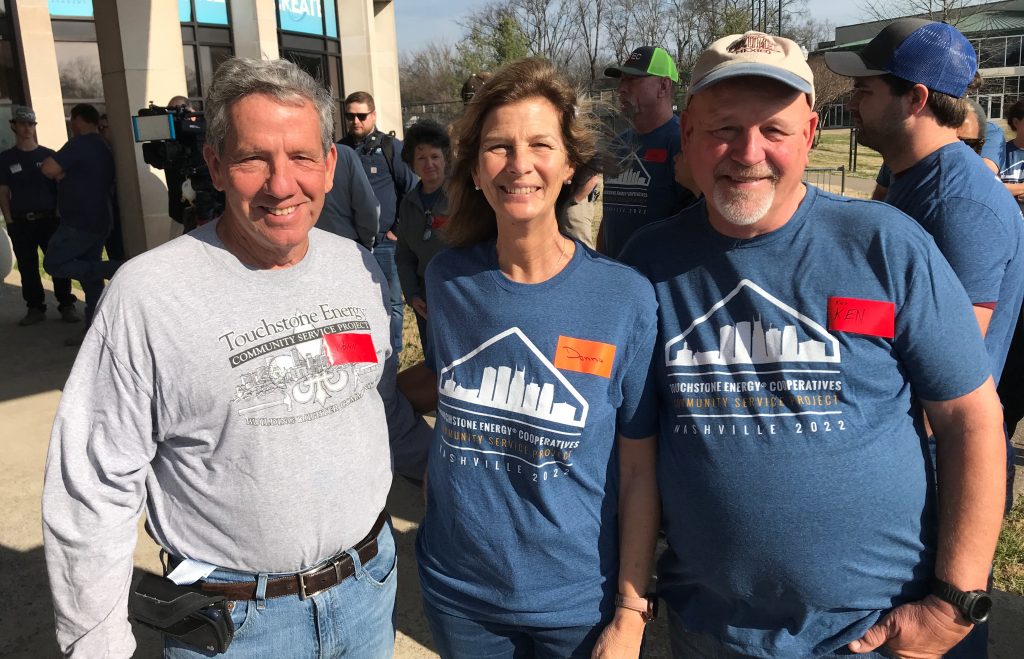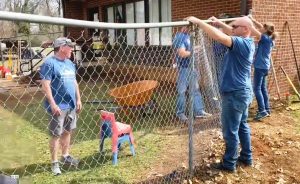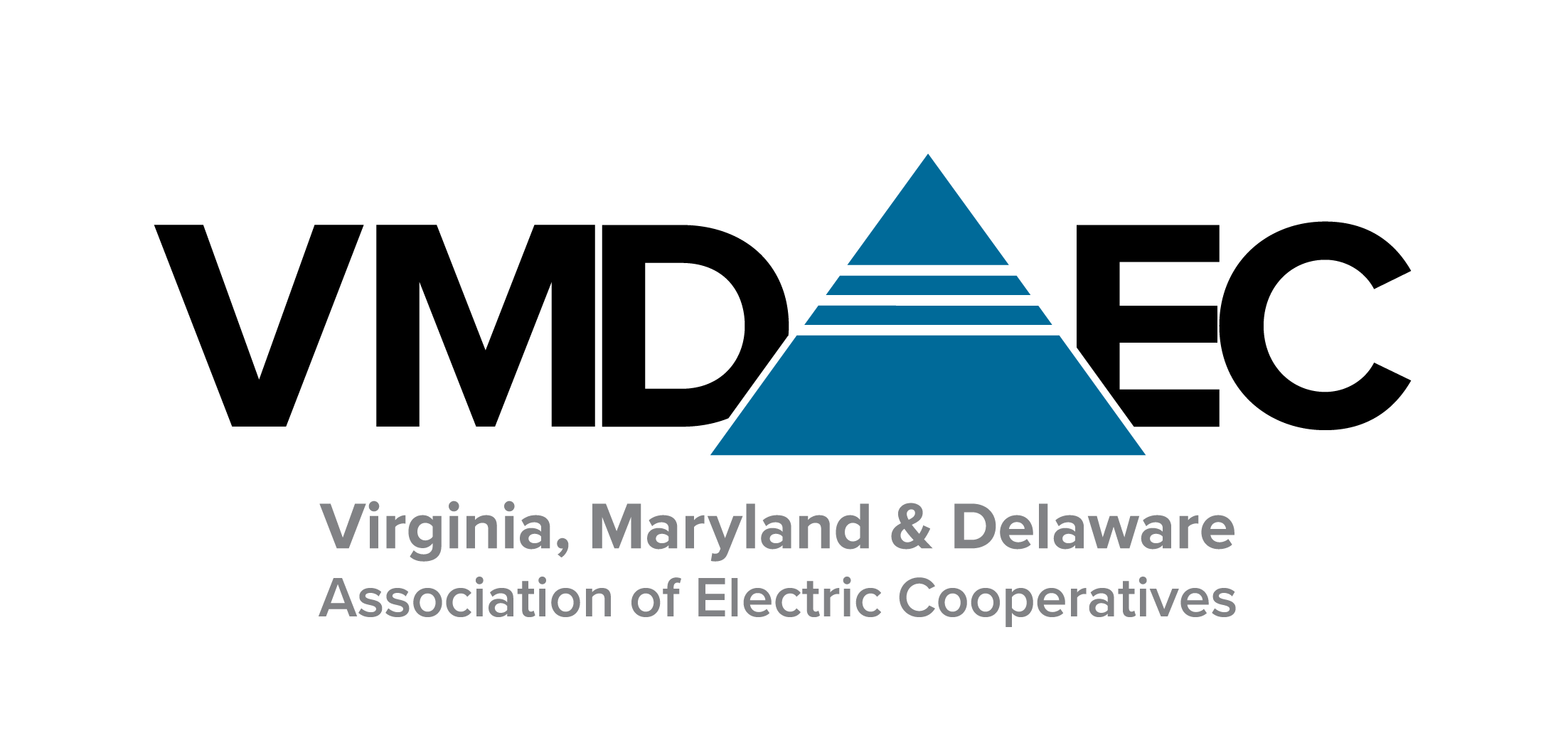
From left, John J. Burke Jr., Donna West and Kenny Lambertson representr the Eastern Shore at the service project. (Photo By: Steven Johnson)
My fingers ached for days. But I suppose that’s what you get when you try to stretch a 10-foot-long, chain-link fence beyond any reasonable bound.
Let me back up. On March 5, more than 100 volunteers from electric cooperatives in 25 states participated in the 14th Touchstone Energy Community Service Project. The project is always held on the Saturday before the annual meeting of the National Rural Electric Cooperative Association. The principle is simple: Cooperatives come into town and leave it in a better state than they found it.
In this case, we hopped a bus to Murfreesboro, Tenn., which is about 35 miles southeast of Nashville. and part of Middle Tennessee Electric Cooperative’s service territory. We had four reps from our association — Donna West and John J. Burke Jr., directors at Choptank Electric Cooperative; Choptank member Kenny Lambertson, whose skills as an electrician proved invaluable; and me.
Touchstone organizers divided us into several groups, each led by staffers from Middle Tennessee Electric, who worked with community partners to secure the necessary materials. One group delivered meals as part of a mobile food pantry and subsequently packaged 16,000 more meals (no, not a typo). Burke and Lambertson helped to install 200 new LED light fixtures at an elementary school. “It was slow going at first, but we found a rhythm,” Burke joked with us at a lunch break.
In the back of Wee Care Day Care Center, which serves a low-income population, West was on a ladder fixing a gutter, while I was busting through concrete with a metal rod to pave the way for a French drain. With the bad gutter and lack of a drainage system, the children of Wee Care were playing in ankle-deep pools of water. Not good. Rochelle Smith, who said she has been affiliated with the day care center since 1979, looked us over and said, “We’ve never had this kind of help.”

The offending, sagging fence.
And then, there was the fence. The fence had become undone from its moorings and represented, at most, a minimal obstacle to any four-year-old intent on escaping from the confines of the day care center. Some of our team reset end poles, and then we gathered to fasten the fence ends to them. We unrolled the fence to position it, and suddenly the words of Roy Scheider in “Jaws” resonated in my mind: “You’re gonna need a bigger boat.”
The fence was about four inches short of its ideal length. We could have kicked the project back to Middle Tennessee Electric, or maybe located some loose links to rig the gap. But electric cooperatives electrified rural America one pole at a time in the 1930s, so seeing the task to completion was in our blood.
Everyone on our team hooked their fingers around the chain links and pulled. And pulled. And pulled. Ordinarily, the back of the playground would be filled with the sounds of happy children; now it had morphed into a crescendo of guttural noises. To give credit where credit is due: West of Choptank; Tim McCarthy, CEO of Sioux Valley Energy in South Dakota; Loyd Rice of SEMO Electric Cooperative in Missouri; Dave Sunderman, CEO of Benco Electric Cooperative in Minnesota; and Jordan Warren, Mike Johnson and Cliff Reed of Middle Tennessee.
That’s right: It took half-a-dozen volunteers to nudge the chain links an inch at a time, while Warren quickly applied a clamp, trying not to catch a finger when the taut links snapped. The end result was not pretty, and I suspect its deterrent effect was more of appearance than of workmanship, but we got the job done. I saw McCarthy a couple of days later at the NRECA annual meeting and we compared cramped fingers.
Next year’s meeting is again in Nashville and I’d urge anyone to go a day or two early and participate in the Touchstone project. It’s a way of demonstrating the co-op principle of Concern for Community. And you might just get a pretty good story out of it.
—Report by Steven Johnson, Vice President, Communications, VMD Association

